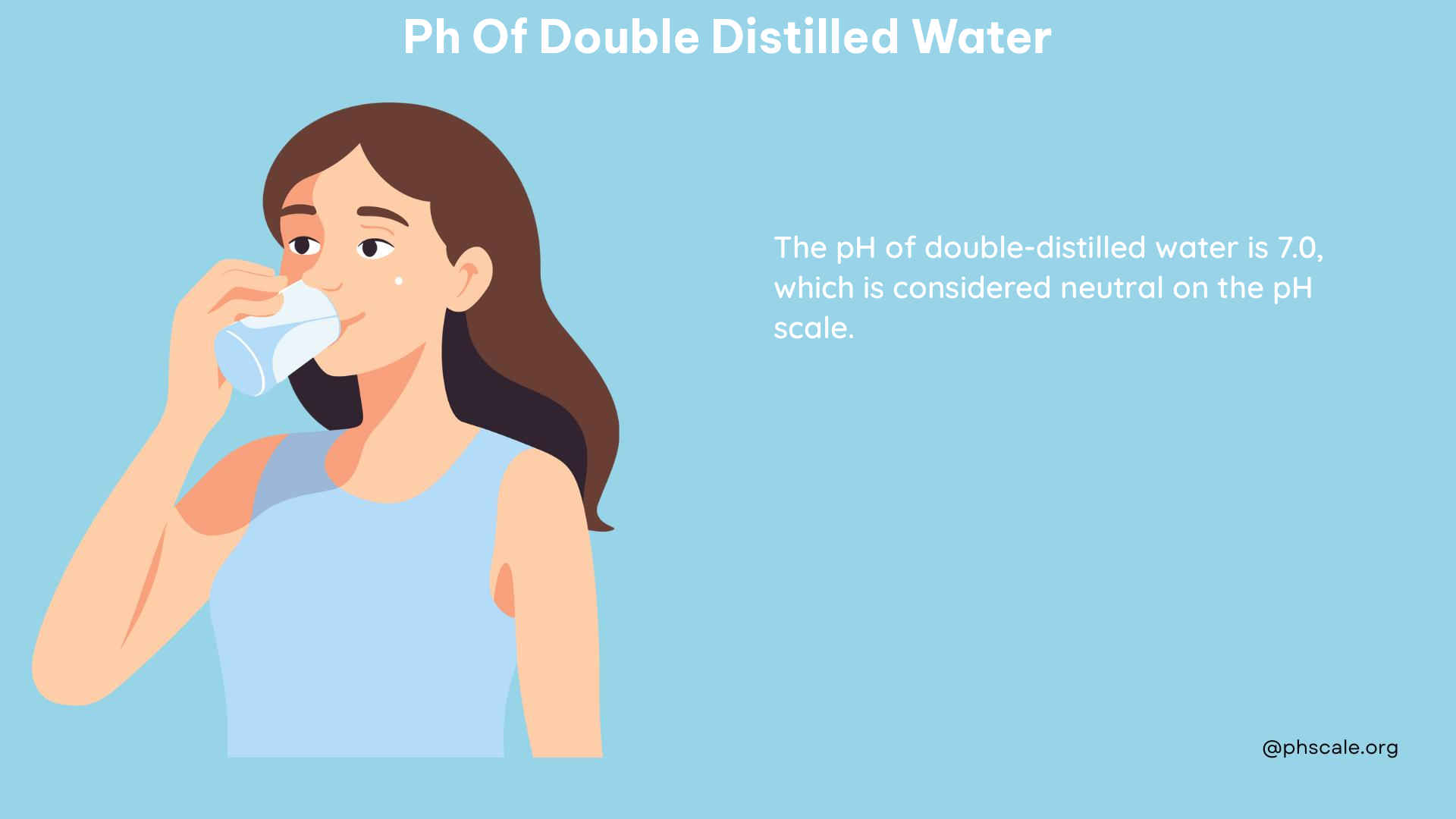The pH of double distilled water is a crucial factor to consider, particularly in laboratory and scientific applications where the highest level of purity is essential. This comprehensive guide delves into the intricacies of the pH of double distilled water, providing insights into its typical range, the factors that influence it, and the best practices for maintaining its optimal pH.
Typical pH Range of Double Distilled Water
The theoretical pH of double distilled water is 7.0, indicating neutrality. However, in practice, it often has a slightly acidic pH due to the absorption of carbon dioxide from the atmosphere, which forms carbonic acid and releases hydrogen ions. The typical pH range of double distilled water is between 5.8 and 7.0, depending on the level of exposure to air and other environmental factors.
pH Variation with Exposure to Air and Temperature

When double distilled water is exposed to air, it absorbs carbon dioxide, leading to a decrease in pH. This process can occur rapidly, with the pH dropping to around 5.8 within a few hours. Temperature variations can also affect the pH, but the impact is generally less significant compared to the influence of atmospheric carbon dioxide.
Measuring pH in Double Distilled Water
Measuring the pH of double distilled water can be challenging due to its low ionic strength. The lack of ions in the solution can make it difficult for pH electrodes to function accurately. Adding a small amount of ionic compounds like potassium chloride (KCl) or sodium chloride (NaCl) can improve the conductivity of the water and provide more reliable pH readings.
Contaminants and Chemicals Present
Double distilled water can contain trace amounts of contaminants, including dissolved air, which contributes to its acidic pH. Other impurities may come from the container or the distillation process itself. These impurities can affect the pH and overall purity of the water.
Dealing with Contaminants and pH Issues
To minimize the impact of contaminants and pH variations, it is essential to:
- Use high-quality distillation equipment: Ensure that the distillation process is carried out with proper equipment and techniques to minimize impurities.
- Store water properly: Store double distilled water in airtight containers to reduce exposure to atmospheric carbon dioxide.
- Add ionic compounds for pH measurement: Add a small amount of KCl or NaCl to improve the conductivity of the water for accurate pH measurements.
- Monitor and control temperature: Maintain a consistent temperature to minimize its impact on pH.
Helpful pH Quantity to Consume
For general consumption, a pH range of 6.5 to 8.5 is considered suitable for human health. However, for laboratory and scientific applications, the pH of double distilled water should be as close to 7.0 as possible to ensure the highest purity and accuracy.
History and Background
The concept of pH was first introduced by Danish chemist Søren Sørensen in 1909. The pH scale is a measure of the concentration of hydrogen ions in a solution, with a pH of 7 being neutral, below 7 being acidic, and above 7 being basic.
References
- The Chemistry Blog – “What Is The pH of Distilled Water?” (https://www.chemicals.co.uk/blog/ph-of-distilled-water)
- Reddit – “Distilled water pH” (https://www.reddit.com/r/chemistry/comments/16g727e/distilled_water_ph/)
- Sciencing – “What Is the pH of Distilled Water?” (https://sciencing.com/ph-distilled-water-4623914.html)
- Bionity – “Double distilled water” (https://www.bionity.com/en/encyclopedia/Double_distilled_water.html)
